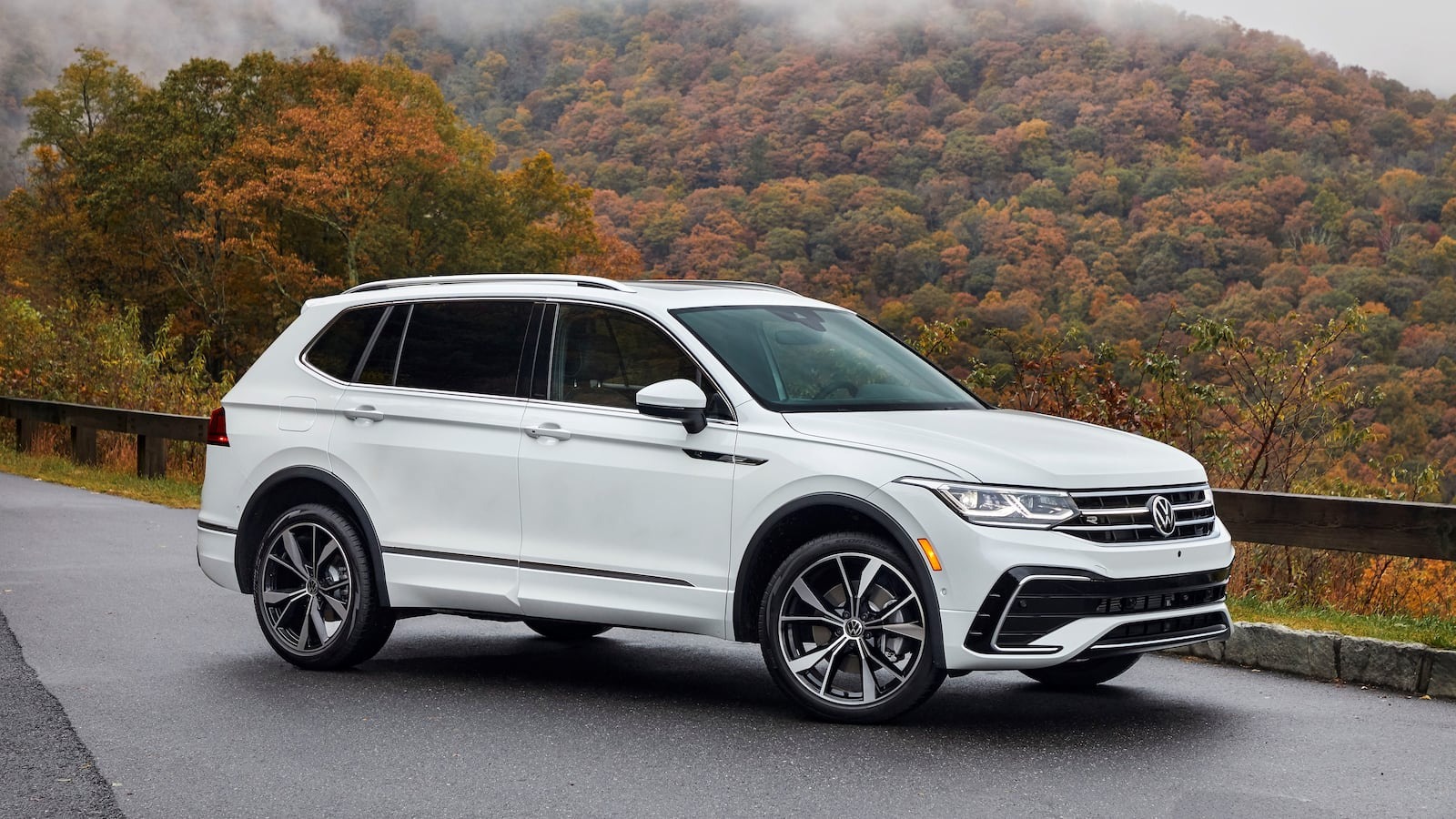When it comes to automotive longevity, few factors are as crucial as a vehicle’s ability to resist rust and corrosion. For Volkswagen owners and prospective buyers, understanding which models excel in corrosion resistance and which ones struggle can mean the difference between decades of reliable service and costly bodywork repairs.
Volkswagen’s relationship with rust has been a complex one throughout its history, with significant improvements made over the decades but some models still proving more susceptible than others.
The German automaker has invested heavily in corrosion protection technology, offering a comprehensive 12-year rust warranty on many of their vehicles.
This commitment demonstrates Volkswagen’s confidence in their modern manufacturing processes and materials. However, not all VW models are created equal when it comes to battling the elements.
Environmental factors, manufacturing periods, design characteristics, and material choices all play crucial roles in determining how well a particular model will age.
Understanding the rust-resistance spectrum among Volkswagen models requires examining both the success stories and the cautionary tales. Some VW vehicles have earned reputations for exceptional longevity, remaining structurally sound and aesthetically pleasing even after years of harsh weather exposure.
Others, unfortunately, have become notorious for premature corrosion issues that can significantly impact both their appearance and resale value. This comprehensive analysis explores ten Volkswagen models across the rust-resistance spectrum, highlighting five that demonstrate exceptional corrosion resistance alongside five that have struggled with rust-related challenges throughout their lifespans.
5 Volkswagens That Rarely Rust
These exceptionally protected vehicles feature comprehensive galvanized steel construction, superior anti-corrosion treatments, and meticulous sealing processes that provide decades of rust-free operation even in harsh winter climates with extensive road salt exposure and coastal environments.
Their advanced metallurgy incorporates zinc-coated body panels, effective drainage design, and quality paint systems that resist oxidation and environmental damage while maintaining structural integrity and cosmetic appearance throughout extended ownership periods.
The combination of premium corrosion protection, thorough factory preparation, and German engineering excellence creates ownership experiences that eliminate rust concerns during normal vehicle life cycles.
From flagship sedans with comprehensive galvanization to proven models with superior paint technology, these vehicles demonstrate Volkswagen’s commitment to long-term durability through extensive anti-corrosion development that prioritizes body longevity over manufacturing cost reduction, delivering rust resistance that maintains both structural safety and resale value throughout decades of ownership.
1. Volkswagen Atlas (2018-Present)
The Volkswagen Atlas represents the pinnacle of modern VW corrosion protection technology, showcasing how far the German automaker has advanced in preventing rust and extending vehicle longevity.
Built on Volkswagen’s MQB platform and manufactured in Chattanooga, Tennessee, the Atlas benefits from state-of-the-art galvanization processes and advanced materials science that make it remarkably resistant to corrosion.
The Atlas’s rust resistance begins with its hot-dip galvanized steel construction, where the entire body shell is immersed in molten zinc to create a protective barrier that effectively prevents moisture and oxygen from reaching the underlying steel.
This process, combined with Volkswagen’s sophisticated cathodic electrocoating primer system, creates multiple layers of protection that work together to repel corrosive elements. The primer is electrically applied, ensuring even coverage in hard-to-reach areas where traditional spray applications might leave gaps.
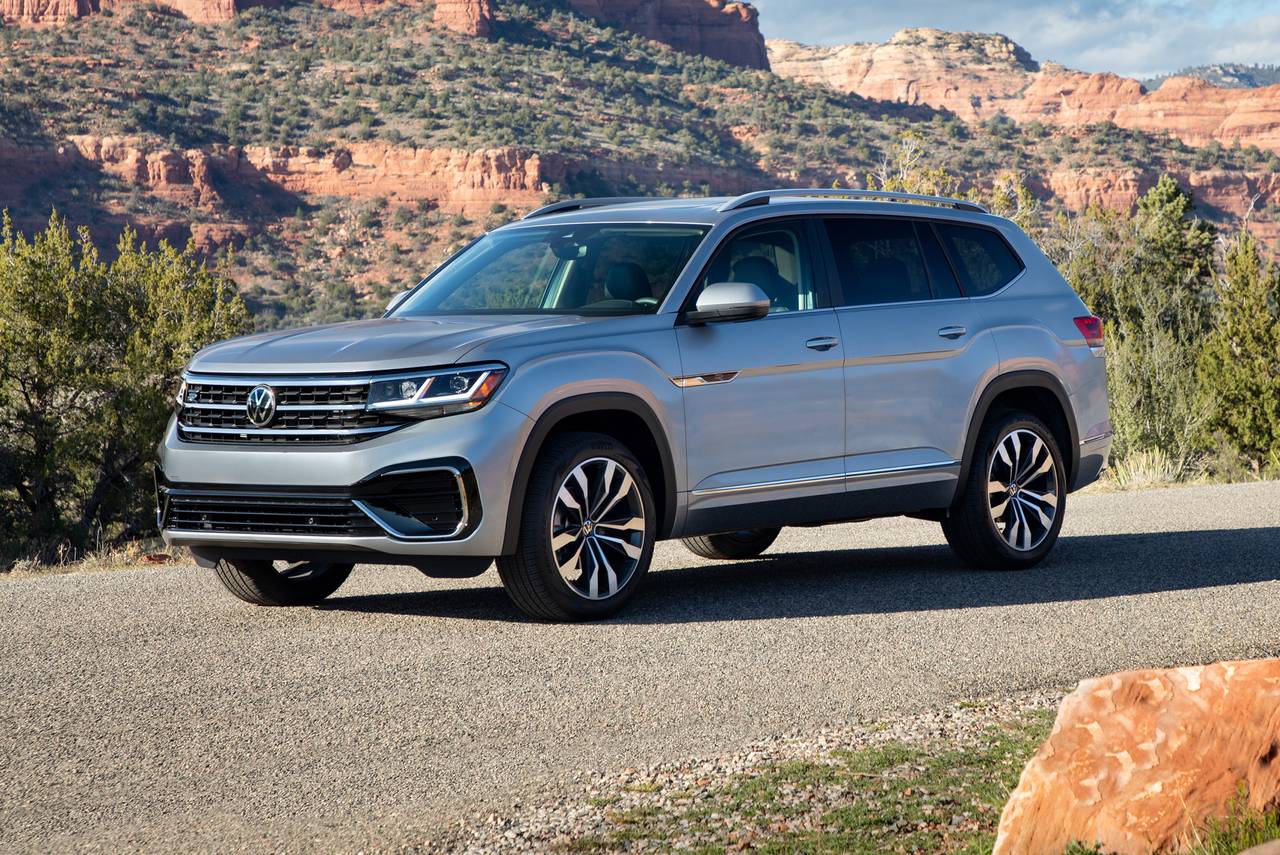
Manufacturing quality control at the Chattanooga facility includes rigorous salt spray testing, where Atlas body panels undergo accelerated corrosion testing equivalent to decades of real-world exposure.
The results consistently demonstrate the model’s exceptional resistance to rust formation, even in challenging conditions. The Atlas also benefits from improved drainage design, with strategically placed water evacuation channels that prevent moisture accumulation in vulnerable areas like door frames and structural joints.
Owners in harsh climates, particularly those in northern states where road salt is heavily used during winter months, report minimal corrosion issues even after several years of ownership.
The Atlas’s corrosion warranty coverage reflects Volkswagen’s confidence in the model’s longevity, with comprehensive protection against perforation rust for twelve years regardless of mileage.
This extensive coverage demonstrates the manufacturer’s commitment to the Atlas’s durability and provides owners with peace of mind regarding long-term ownership costs.
The model’s design also incorporates lessons learned from previous Volkswagen rust issues, with improved sealing around critical junctions and enhanced protection for areas that traditionally showed early corrosion signs.
The Atlas’s success in rust prevention serves as a benchmark for Volkswagen’s current manufacturing standards and represents a significant advancement over earlier models that struggled with premature corrosion problems.
2. Volkswagen Arteon (2019-Present)
The Volkswagen Arteon stands as a testament to modern German engineering excellence, particularly in the corrosion protection. This premium fastback sedan incorporates cutting-edge anti-rust technology that places it among the most corrosion-resistant vehicles in Volkswagen’s contemporary lineup.
The Arteon’s development coincided with Volkswagen’s major investments in advanced manufacturing processes, resulting in exceptional build quality and longevity characteristics that rival luxury competitors.
Central to the Arteon’s rust resistance is its advanced multi-stage painting process, which begins with a comprehensive cleaning and phosphating treatment that prepares the steel surface for optimal primer adhesion.
The cathodic electrocoating process follows, where the entire body shell is submerged in an electrically charged primer bath that ensures complete coverage, including inside cavities and welded joints where traditional application methods often fail.
This electrical deposition creates a uniform protective layer that serves as the foundation for the Arteon’s long-term corrosion resistance. The model benefits from Volkswagen’s premium materials strategy, utilizing higher-grade steel alloys with improved inherent corrosion resistance compared to standard automotive steels.
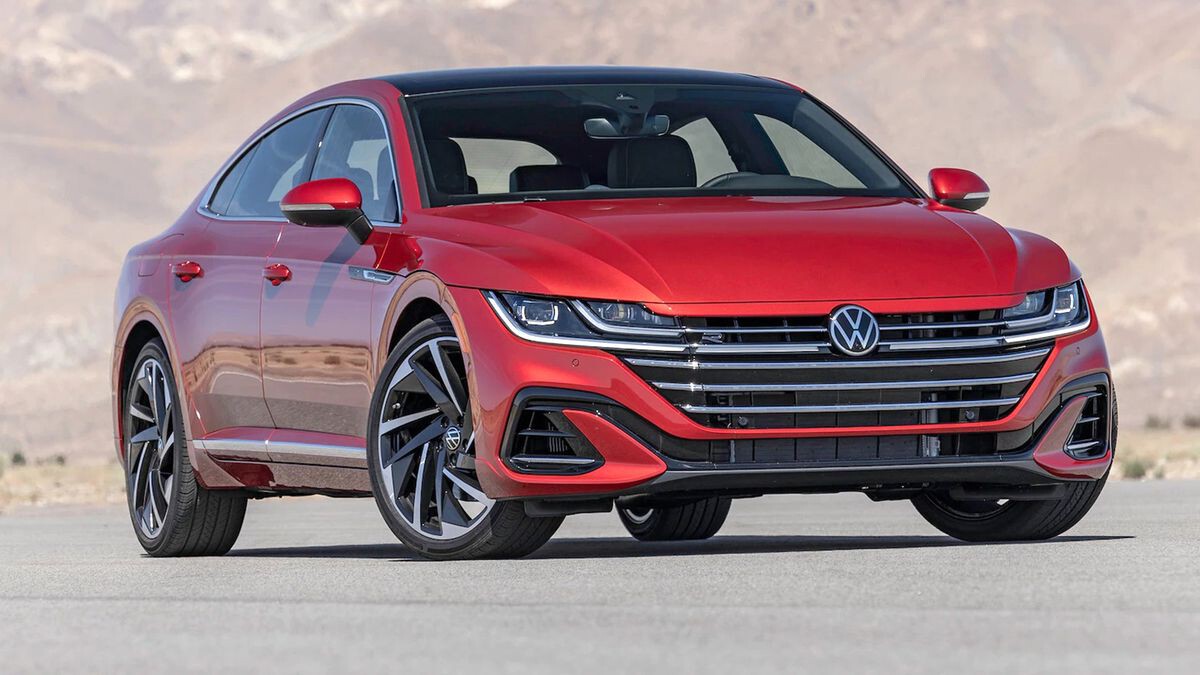
These materials, combined with advanced joining techniques that minimize galvanic corrosion between dissimilar metals, create a body structure that maintains its integrity even under challenging environmental conditions. The Arteon’s manufacturing process also includes comprehensive sealing procedures that prevent moisture infiltration into critical areas.
Field reports from Arteon owners consistently highlight the model’s exceptional resistance to environmental damage, with vehicles maintaining their pristine appearance even after years of exposure to harsh weather conditions.
The model’s design incorporates strategic drainage features that prevent water accumulation, while improved underbody protection shields vulnerable components from road debris and corrosive substances. Professional automotive assessments consistently rank the Arteon among the top performers in long-term durability studies.
The Arteon’s corrosion protection extends beyond basic rust prevention to encompass comprehensive environmental resistance, including protection against acid rain, industrial pollutants, and coastal salt air exposure.
This comprehensive approach to durability ensures that Arteon owners can expect minimal corrosion-related maintenance costs throughout the vehicle’s operational life, making it an exceptional choice for buyers prioritizing long-term reliability and value retention.
3. Modern Jetta (2019-Present)
The current-generation Volkswagen Jetta represents a remarkable transformation in corrosion resistance compared to its predecessors, incorporating decades of manufacturing refinements and technological advances that make it one of the most rust-resistant compact sedans available today.
Built on Volkswagen’s highly refined MQB-A1 platform, the modern Jetta benefits from comprehensive galvanization processes and advanced protective coatings that effectively combat corrosion in all climate conditions.
Volkswagen’s investment in the Jetta’s anti-rust technology becomes evident through its multi-layer protection system, beginning with fully galvanized steel body panels that receive a zinc coating through hot-dip galvanization.
This process creates a sacrificial barrier that prevents rust formation even when the surface coating is damaged, as the zinc corrodes preferentially to protect the underlying steel. The galvanization coverage extends to critical structural components, ensuring comprehensive protection throughout the vehicle’s service life.
The manufacturing process incorporates sophisticated quality control measures specifically designed to prevent corrosion-related issues that plagued earlier Jetta generations.
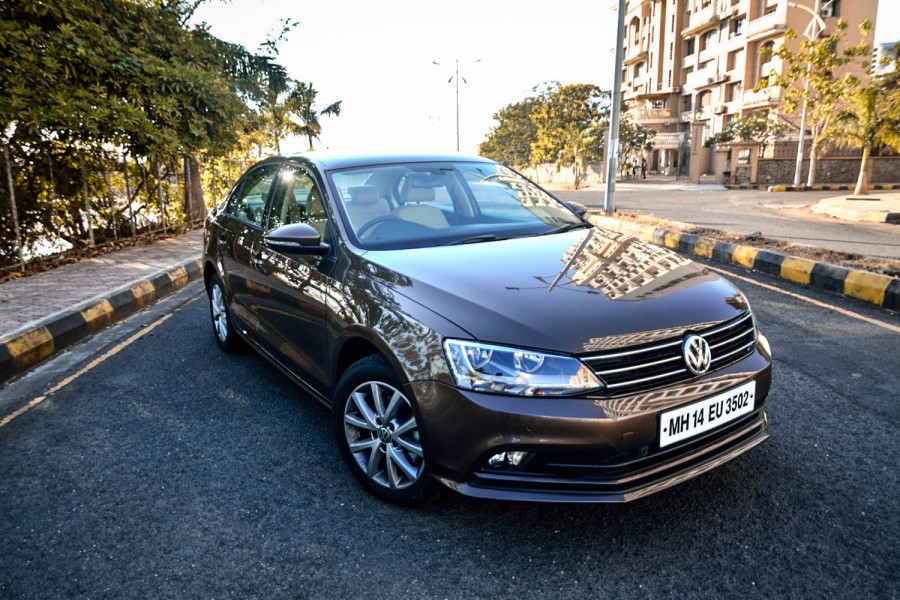
Advanced robotics ensure consistent application of protective coatings, while computerized monitoring systems verify complete coverage in traditional problem areas such as door frames, wheel wells, and trunk lid interfaces. The Jetta’s improved design also features enhanced drainage systems that prevent moisture accumulation in vulnerable locations.
Owners report exceptional satisfaction with the modern Jetta’s resistance to environmental damage, particularly in regions known for aggressive road salt usage during winter months.
Independent testing consistently demonstrates the model’s superior performance in accelerated corrosion studies, with salt spray test results indicating resistance levels that significantly exceed industry standards.
The Jetta’s comprehensive twelve-year corrosion warranty reflects Volkswagen’s confidence in these improvements and provides substantial protection for owners.
The model’s success in rust prevention extends to its resale value retention, with used modern Jettas consistently commanding premium prices due to their reputation for durability and low maintenance requirements.
This market recognition validates the effectiveness of Volkswagen’s corrosion protection investments and demonstrates how proper manufacturing techniques can transform a model’s long-term reputation.
The modern Jetta serves as proof that contemporary Volkswagen engineering has successfully addressed historical rust concerns while maintaining the model’s characteristic efficiency and driving dynamics.
4. ID.4 Electric SUV (2021-Present)
The Volkswagen ID.4 represents the future of automotive corrosion resistance, leveraging both advanced materials science and electric vehicle design advantages to create an exceptionally rust-resistant platform.
As Volkswagen’s first mass-market electric SUV built on the dedicated MEB electric platform, the ID.4 incorporates cutting-edge manufacturing techniques and materials that provide superior protection against environmental degradation compared to traditional internal combustion vehicles.
The ID.4’s corrosion resistance benefits significantly from its electric vehicle architecture, which eliminates many traditional rust-prone components associated with internal combustion engines.
The absence of exhaust systems, fuel lines, and complex cooling networks reduces potential corrosion initiation points while simplifying the protection strategy.
The vehicle’s aluminum-intensive construction, particularly in the battery housing and structural components, provides inherent corrosion resistance that surpasses conventional steel construction methods.
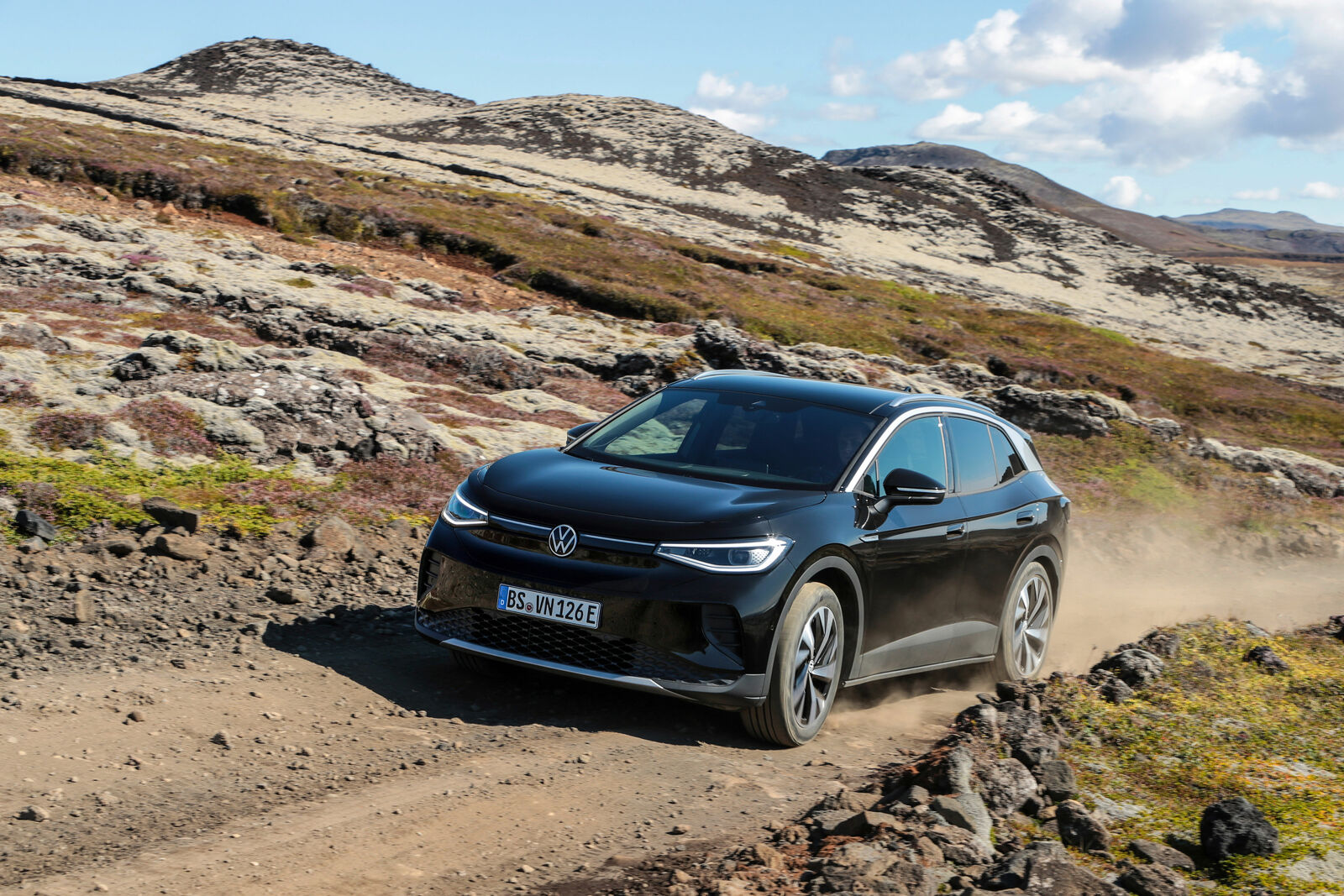
Manufacturing at Volkswagen’s Chattanooga facility incorporates state-of-the-art robotic application systems that ensure precise and consistent protective coating coverage across all body surfaces.
The ID.4’s construction process includes advanced cathodic protection systems specifically designed for electric vehicle architectures, with specialized attention to protecting the battery housing and electrical systems from moisture infiltration and galvanic corrosion. The model’s comprehensive sealing systems prevent water ingress while maintaining the structural integrity necessary for crash protection.
The ID.4’s design philosophy prioritizes long-term durability, with engineering teams specifically addressing corrosion challenges unique to electric vehicles, such as protecting high-voltage systems from environmental exposure.
Advanced polymer coatings and specialized gasket materials ensure that electrical components remain isolated from corrosive elements throughout the vehicle’s operational life.
The model’s underbody protection includes comprehensive shielding that guards against road debris while facilitating proper drainage to prevent moisture accumulation.
Early adoption feedback from ID.4 owners consistently highlights the model’s exceptional build quality and resistance to environmental damage. Professional automotive assessments predict exceptional long-term durability based on the model’s advanced materials and manufacturing processes.
The ID.4’s comprehensive warranty coverage, including extensive corrosion protection, reflects Volkswagen’s confidence in the model’s longevity and represents the manufacturer’s commitment to electric vehicle reliability.
This combination of advanced technology and proven manufacturing excellence positions the ID.4 as a benchmark for future automotive corrosion resistance standards.
Also Read: 5 Nissans That Stay Comfortable for Families vs 5 That Feel Cheap
5. Tiguan (2018-Present, Second Generation)
The second-generation Volkswagen Tiguan demonstrates remarkable improvements in corrosion resistance compared to its predecessor, incorporating comprehensive design refinements and advanced manufacturing processes that place it among the most durable compact SUVs in today’s market.
Built on the versatile MQB platform with manufacturing primarily at Volkswagen’s Puebla, Mexico facility, the modern Tiguan benefits from standardized global quality control procedures that ensure consistent corrosion protection regardless of production location.
The Tiguan’s transformation in rust resistance begins with its comprehensive galvanization strategy, where critical body components receive multi-stage zinc coating treatments that provide long-lasting protection against corrosive elements.
The manufacturing process incorporates lessons learned from earlier generation shortcomings, with particular attention paid to traditional problem areas such as wheel wells, door frames, and tailgate interfaces.
Advanced robotic application systems ensure consistent protective coating coverage while computerized quality control systems verify complete protection in hard-to-reach areas.
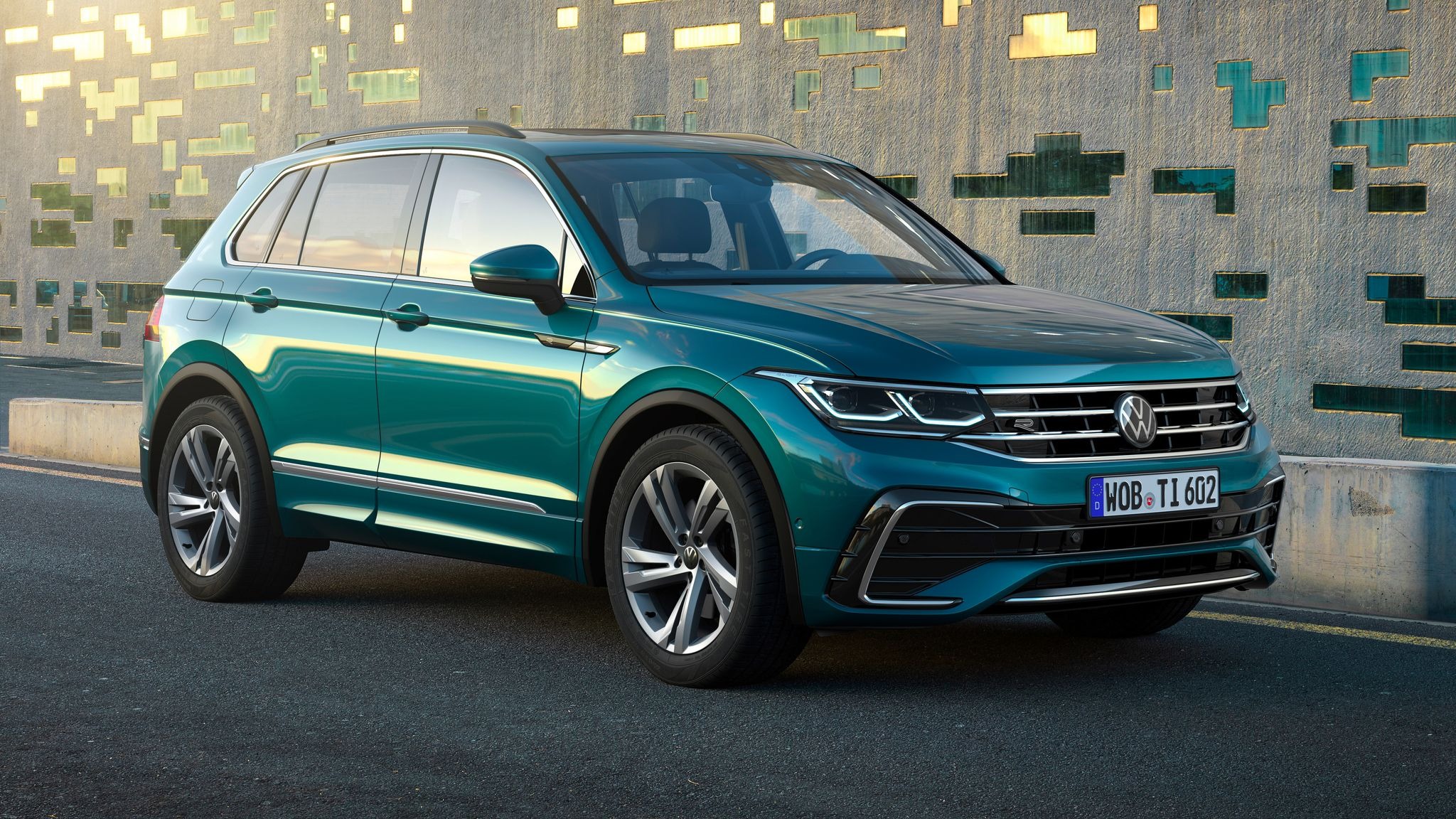
Structural improvements in the second-generation Tiguan include enhanced drainage design that prevents moisture accumulation in vulnerable locations, while improved sealing systems protect critical junctions from water infiltration.
The model’s underbody protection incorporates comprehensive shielding that guards against road debris and salt spray while facilitating proper water evacuation. These design improvements work synergistically with advanced materials to create exceptional environmental resistance.
Owner satisfaction surveys consistently rank the modern Tiguan highly for durability and low maintenance requirements, with particular praise for its resistance to winter weather damage in regions with aggressive deicing salt usage.
Professional automotive assessments confirm the model’s exceptional performance in accelerated corrosion testing, with results indicating protection levels that significantly exceed industry standards. The Tiguan’s twelve-year corrosion warranty provides comprehensive coverage that reflects Volkswagen’s confidence in the model’s longevity.
The success of the second-generation Tiguan in preventing rust-related issues has contributed significantly to its strong resale value retention and market reputation for reliability.
Independent quality studies consistently place the model among top performers in long-term durability assessments, validating Volkswagen’s investment in improved manufacturing processes and materials science.
This combination of proven performance and comprehensive warranty protection makes the modern Tiguan an excellent choice for buyers prioritizing long-term ownership satisfaction and minimal maintenance costs.
5 Volkswagens That Rot Like Tin
These corrosion-prone vehicles disappoint owners with premature rust formation, structural deterioration, and body panel failures that contradict German engineering reputation through inadequate anti-corrosion protection and poor-quality steel that succumbs to environmental damage within years of purchase.
Their compromised metallurgy incorporates insufficient galvanization, problematic drainage design, and substandard paint systems that accelerate oxidation despite Volkswagen positioning that suggests superior build quality and durability over mainstream competitors.
The combination of cost-cutting measures, inadequate corrosion testing, and problematic steel quality creates ownership disasters as buyers discover that German engineering reputation cannot prevent fundamental metallurgy failures that prioritize manufacturing costs over long-term durability.
From budget models with minimal rust protection to mainstream vehicles with known corrosion issues, these cars prove that Volkswagen’s quality standards vary dramatically across model lines, transforming premium purchases into rusting disasters requiring expensive bodywork and structural repairs that quickly exceed vehicle value and compromise both safety and resale potential.
1. MK4 Golf/Jetta (1999-2006)
The MK4 generation Golf and Jetta represent one of Volkswagen’s most notorious periods regarding rust susceptibility, earning an unfortunate reputation for premature corrosion that significantly impacted their long-term reliability and resale values.
Despite their popularity during the early 2000s and many positive attributes including refined interiors and solid driving dynamics, these vehicles became synonymous with rust problems that appeared far earlier than owners expected from a German-engineered automobile.
The MK4’s corrosion issues stemmed from several manufacturing and design factors that converged to create perfect conditions for rust formation.
The most problematic area was the front fender well region, where Volkswagen installed foam sound-deadening material between the fender liner and outer fender panel.
This foam acted as a moisture trap, absorbing water from rain and car washes while providing no effective drainage mechanism. The perpetually damp environment created ideal conditions for rust initiation, leading to distinctive perforation patterns that became characteristic of the MK4 generation.
Manufacturing processes during the MK4 era employed less sophisticated corrosion protection compared to modern standards. The galvanization coverage was incomplete, leaving critical areas vulnerable to rust formation once the paint system was compromised by stone chips or minor accidents.
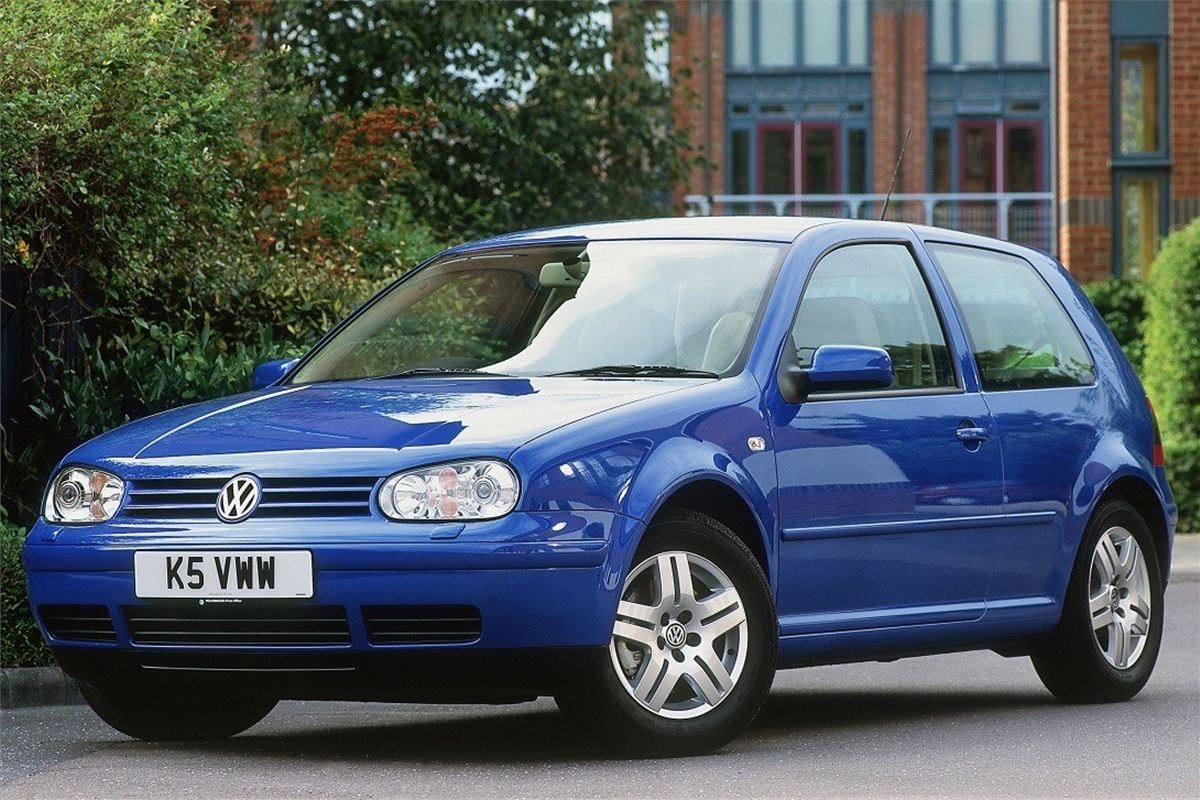
The electrocoating primer application lacked the precision and coverage consistency of contemporary processes, resulting in gaps in protection that allowed corrosion to establish footholds throughout the vehicle structure.
Design flaws compounded the material and manufacturing issues, with inadequate drainage systems that allowed water accumulation in critical structural areas.
The rear wheel wells, trunk lid interfaces, and door frame junctions became common failure points where rust would appear within just a few years of ownership.
Northern climate owners faced particularly severe problems, with road salt accelerating the corrosion process to the point where structural integrity could be compromised within a decade of normal use.
The MK4’s rust problems became so widespread that they significantly impacted Volkswagen’s reputation in key markets, leading to numerous warranty claims and customer satisfaction issues.
Many owners discovered that repair costs often exceeded the vehicle’s diminished resale value, creating financial hardships that damaged long-term brand loyalty.
The experience forced Volkswagen to completely reevaluate their corrosion protection strategies, ultimately leading to the comprehensive improvements seen in subsequent generations. Today, finding a rust-free MK4 Golf or Jetta requires careful inspection and often commands premium pricing due to their scarcity in good condition.
2. B5 Passat (1998-2005)
The B5 generation Volkswagen Passat stands as a cautionary tale in automotive rust susceptibility, representing a period when Volkswagen’s ambitious engineering aspirations were undermined by inadequate corrosion protection strategies.
While the B5 Passat offered sophisticated features, refined powertrains, and European luxury car dynamics at a competitive price point, its tendency toward premature rust formation became a defining characteristic that overshadowed its positive attributes and created significant long-term ownership challenges.
The B5 Passat’s corrosion problems manifested most severely in the rear quarter panel area, where complex body panel joints created moisture traps that proved impossible to adequately protect with the era’s manufacturing processes.
The interface between the rear bumper cover and quarter panel became particularly notorious for rust formation, often beginning as small bubbles in the paint before rapidly expanding into structural perforation. The problem was exacerbated by inadequate factory sealing that allowed water infiltration during car washes and rain exposure.
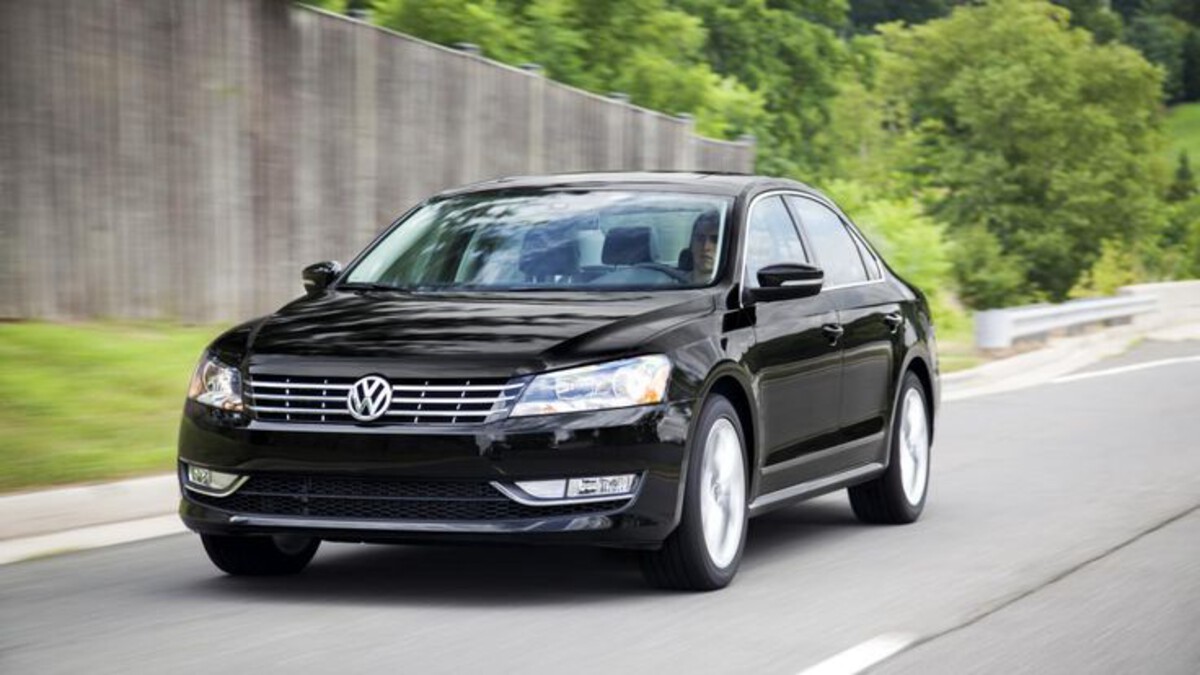
Manufacturing quality control during the B5 era failed to address critical corrosion protection gaps, with incomplete galvanization coverage leaving vulnerable areas exposed to moisture and road salt.
The primer application process lacked the precision required for long-term protection, particularly in complex geometries where traditional spray techniques couldn’t ensure complete coverage.
These manufacturing shortcomings were compounded by design decisions that prioritized aesthetics over corrosion resistance, creating hidden moisture accumulation points throughout the vehicle structure.
The model’s sophisticated engineering, including features like all-wheel drive systems and advanced suspension components, created additional corrosion challenges as complex mechanical systems required extensive mounting points and service access panels that compromised structural continuity.
The underbody protection was inadequate for the vehicle’s complexity, leaving critical components exposed to road spray and deicing chemicals. Northern climate owners experienced particularly severe problems, with structural components showing significant corrosion within just five to seven years of normal use.
Warranty claims related to B5 Passat rust issues reached epidemic proportions in many markets, forcing Volkswagen to extend coverage periods and develop specialized repair procedures. However, the fundamental design and manufacturing issues proved impossible to address through warranty repairs alone, as rust would often reappear in adjacent areas shortly after initial repairs.
The B5 Passat’s rust reputation became so severe that it significantly impacted resale values and contributed to Volkswagen’s decision to completely redesign their corrosion protection strategies for subsequent generations. Today, the B5 Passat serves as a reminder of how inadequate rust protection can undermine otherwise excellent automotive engineering.
3. First Generation Tiguan (2009-2017)
The first-generation Volkswagen Tiguan exemplifies how design ambitions can be undermined by inadequate attention to corrosion protection, resulting in a compact SUV that, despite its many positive attributes, developed a troubling reputation for premature rust formation that significantly impacted owner satisfaction and long-term reliability.
While the original Tiguan offered competitive performance, interior quality, and European driving dynamics, its susceptibility to environmental damage became a defining characteristic that overshadowed its engineering achievements.
The first-generation Tiguan’s rust problems centered primarily around the rear hatch area, where complex body panel interfaces and inadequate drainage design created perfect conditions for moisture accumulation and subsequent corrosion.
The tailgate’s lower section, particularly around the license plate mounting area and spoiler attachment points, became notorious for rust formation that often began as minor paint bubbling before rapidly progressing to structural perforation.
The problem was exacerbated by design decisions that prioritized aerodynamics over water management, creating hidden pockets where moisture could accumulate without proper evacuation routes.

Manufacturing processes during the first-generation Tiguan’s production run employed corrosion protection strategies that proved inadequate for the vehicle’s intended service life.
The galvanization coverage was inconsistent, particularly in complex geometric areas where traditional coating processes struggled to achieve complete protection.
The electrocoating primer application lacked the sophistication of modern systems, resulting in coverage gaps that became corrosion initiation points once the outer paint system was compromised by stone chips or minor accidents.
The model’s relatively high ride height and SUV configuration exposed it to increased road debris and salt spray compared to lower passenger cars, yet the underbody protection was inadequate for these challenging conditions.
Critical structural components, including subframe mounting points and suspension attachment areas, showed premature corrosion that could compromise both safety and functionality. The problem was particularly severe in regions with aggressive winter maintenance programs, where road salt created accelerated corrosion conditions.
Warranty claims related to first-generation Tiguan rust issues became increasingly common as vehicles reached the five to seven-year age range, forcing Volkswagen to develop specialized repair procedures and extend coverage for affected owners.
However, the fundamental design and manufacturing limitations proved difficult to address through warranty repairs alone, as rust often returned in adjacent areas within a few years of initial repairs.
The experience led Volkswagen to completely redesign their corrosion protection approach for the second-generation Tiguan, implementing comprehensive improvements that addressed the original model’s shortcomings. Today, the first-generation Tiguan’s rust susceptibility serves as an important lesson in the critical importance of comprehensive corrosion protection in modern automotive design.
4. MK3 Golf (1993-1999)
The MK3 Volkswagen Golf represents an earlier era of automotive manufacturing when corrosion protection technology was less sophisticated and comprehensive rust prevention was not yet considered a critical design priority.
While the MK3 Golf offered solid build quality, reliable powertrains, and the driving dynamics that made Volkswagen famous, its tendency toward rust formation became increasingly problematic as vehicles aged, particularly in climates with harsh winter conditions and aggressive road salt usage.
The MK3 Golf’s corrosion susceptibility stemmed from manufacturing processes that employed basic galvanization techniques with limited coverage compared to modern standards. Critical areas such as door frames, wheel wells, and structural mounting points received inadequate protection, leaving them vulnerable to rust initiation once the paint system was compromised.
The primer application process lacked the precision and coverage consistency required for long-term protection, particularly in complex geometries where traditional spray techniques couldn’t ensure complete coating adhesion.
Design characteristics of the MK3 generation contributed significantly to its rust problems, with inadequate drainage systems that allowed moisture accumulation in critical areas.

The door frame interfaces became particularly notorious for rust formation, often beginning at the bottom of door openings where water would naturally collect during rain and car washing. The rear wheel wells also proved vulnerable, with limited underbody protection allowing road spray and salt to directly contact unprotected steel surfaces.
The model’s popularity during the 1990s meant that many examples were subjected to daily driving conditions without the benefit of garage storage, accelerating the corrosion process in harsh climates.
Northern climate owners faced particularly severe challenges, with road salt creating aggressive corrosion conditions that could compromise structural integrity within a decade of normal use.
The trunk lid interface and front fender attachment points became common failure areas where rust would appear relatively early in the vehicle’s service life.
By the late 1990s, the MK3 Golf’s rust susceptibility had become well-documented among enthusiasts and professional mechanics, leading to specialized aftermarket products designed to slow corrosion progression.
However, the fundamental manufacturing and design limitations proved impossible to address through aftermarket treatments alone, as rust would continue to progress from internal initiation points.
The MK3’s experience provided valuable lessons that influenced Volkswagen’s approach to corrosion protection in subsequent generations, ultimately leading to the comprehensive improvements that characterize modern VW manufacturing processes.
Today, finding a rust-free MK3 Golf requires careful inspection and often commands premium pricing due to the relative scarcity of well-preserved examples.
5. MK2 Golf (1985-1992)
The MK2 Volkswagen Golf represents the automotive industry’s early understanding of corrosion protection, produced during an era when comprehensive rust prevention was still developing as a manufacturing priority.
While the MK2 Golf achieved legendary status for its driving dynamics, build quality, and automotive enthusiast appeal, its susceptibility to rust formation became a significant concern for long-term ownership, particularly in regions with harsh winter climates and aggressive road maintenance practices.
The MK2’s corrosion challenges reflected the manufacturing standards of the 1980s, when galvanization processes were rudimentary compared to modern techniques and comprehensive coverage was not yet considered essential for long-term durability.
The basic zinc coating application provided only limited protection, particularly in complex geometric areas where traditional processes struggled to achieve consistent coverage. Critical structural components, including door frames, wheel wells, and suspension mounting points, received minimal protection that proved inadequate for extended service life.
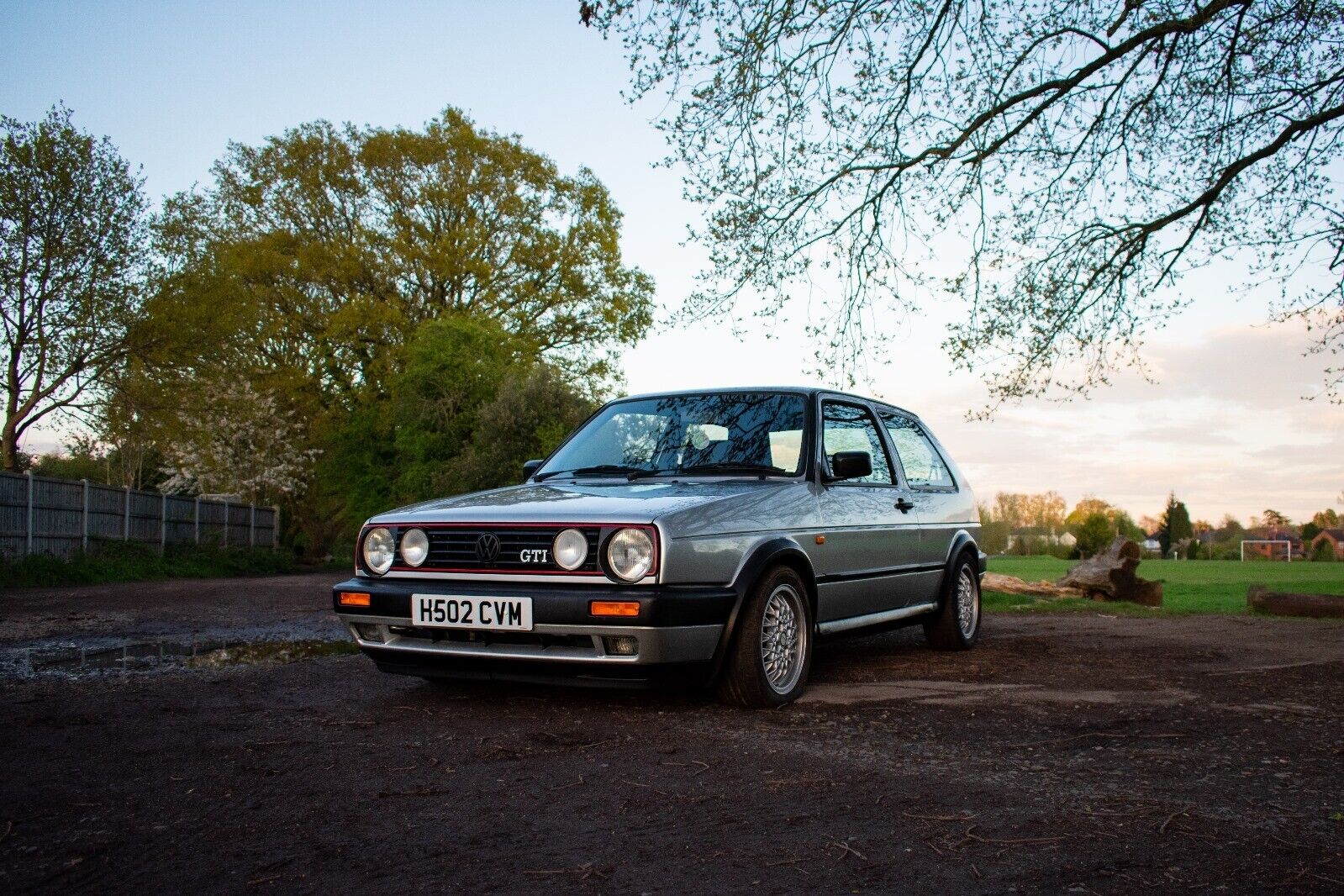
Design characteristics of the MK2 generation inadvertently created ideal conditions for rust formation, with drainage systems that were insufficient for effective moisture management. The door sills became particularly notorious for rust development, often beginning as small perforation points before rapidly expanding into major structural compromise.
The front and rear wheel wells also proved vulnerable, with limited underbody protection allowing direct exposure to road spray, salt, and debris that accelerated corrosion processes.
The model’s construction employed steel grades and joining techniques that, while adequate for their era, lacked the corrosion resistance characteristics of modern materials.
Spot welding processes created galvanic corrosion points where dissimilar metals came into contact, while sealing compounds and primers lacked the longevity required for decades of service.
These fundamental limitations became increasingly apparent as vehicles aged, with rust appearing in predictable patterns that became characteristic of the MK2 generation.
Despite these challenges, the MK2 Golf’s exceptional driving dynamics and mechanical reliability created a devoted following among automotive enthusiasts who were willing to address rust issues to preserve these vehicles. Specialized restoration services and aftermarket protection products developed specifically for MK2 preservation, though preventing rust progression required ongoing maintenance and attention.
The MK2’s legacy includes both its outstanding mechanical characteristics and the valuable lessons it provided about the critical importance of comprehensive corrosion protection.
Today, well-preserved MK2 Golf examples command significant premium pricing due to their rarity and historical significance, while their rust susceptibility serves as a reminder of how far automotive manufacturing has advanced in terms of long-term durability and environmental resistance.
Also Read: 5 Hyundais That Rarely Need Tires vs 5 That Eat Rubber Every Year

